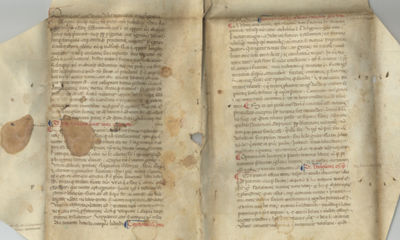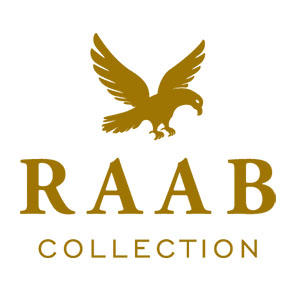signed first edition
by All Medieval Historical Documents|Ancient Philosophers
A 15th century Italian manuscript showing the proliferation in the period in Italy and also the re-use that allowed them to survive These surviving leaves include portions on the need to follow Nature’s guidance and on the roles of Fortune and Nature in determining a man’s calling, as well as on the duties of the elder members of society and the need to follow the best among themDe Officiis (On Duties, On Obligations, or On Moral Responsibilities) is a 44 BC treatise by Marcus Tullius Cicero divided into three books, in which Cicero expounds his conception of the best way to live, behave, and observe moral obligations. The work discusses what is honorable (Book I), what is to one's advantage (Book II), and what to do when the honorable and private gain apparently conflict (Book III).The work's legacy is profound. Although not a Christian work, in 390 St. Ambrose declared it legitimate for the Church to use. It became a moral authority during the Middle Ages. Of the Church Fathers, St. Augustine, St. Jerome and even more so St. Thomas Aquinas, are known to have been familiar with it. Petrarch, the father of humanism and a leader in the revival of Classical learning, championed Cicero. Several of his works build upon the precepts of De Officiis.Following the invention of the printing press, De Officiis was the third book to be printed—third only to the Gutenberg Bible and Donatus's Ars Minor, which was the first printed book.The present documents: What survives includes portions of Book I, chs. 100-104 (on the need to follow Nature’s guidance, but control human appetites) and 120-126 (on the roles of Fortune and Nature in determining a man’s calling, and on the duties of the elder members of society and the need to follow the best among them as examples).Cicero, De Officiis, bifolium from a humanist manuscript, in Latin, on vellum [Italy, likely early fifteenth century]. Two conjoined leaves, each with a single column of 36 lines in a good semi-humanist script, paraphs in red or dark blue, red rubrics (with instructions for rubricator in adjacent margin).It's fascinating re-use in a 1612 accounting ledger: reused as a later Italian vellum binding for a set of accounts dated ‘1612’. You can see the exact dimensions of its re-use, with edges turned in, corners molded, and minor scuffs and stains (affecting pages on outermost sides of later binding the most, the innermost pages quite clean), overall fair and legible condition with wide and clean margins, each leaf 267 by 190mm. (Inventory #: 31144)



